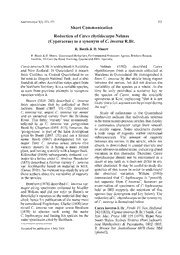
Fundamentals of Engineering Thermodynamics PDF
Preview Fundamentals of Engineering Thermodynamics
FUNDAMENTALS OF ENGINEERING THERMODYNAMICS V.Babu Professor DepartmentofMechanicalEngineering IndianInstituteofTechnology,Madras,INDIA AneBooksPvt.Ltd,NewDelhi MATLAB®isatrademarkofTheMathWorks,Inc.andisusedwithpermission.TheMathWorksdoesnotwarranttheaccuracyof thetextorexercisesinthisbook.Thisbook’suseordiscussionofMATLAB®softwareorrelatedproductsdoesnotconstitute endorsementorsponsorshipbyTheMathWorksofaparticularpedagogicalapproachorparticularuseoftheMATLAB®software. CRCPress Taylor&FrancisGroup 6000BrokenSoundParkwayNW,Suite300 ©2020byV.BabuandAneBooksPvt.Ltd. CRCPressisanimprintofTaylor&FrancisGroup,anInformabusiness NoclaimtooriginalU.S.Governmentworks Printedonacid-freepaper InternationalStandardBookNumber-13:9780367363215(Hardback);9780367816087(eBook) PrinteditionnotforsaleinSouthAsia(India,SriLanka,Nepal,Bangladesh,PakistanorBhutan) Thisbookcontainsinformationobtainedfromauthenticandhighlyregardedsources.Reasonableeffortshavebeenmadetopublish reliabledataandinformation,buttheauthorandpublishercannotassumeresponsibilityforthevalidityofallmaterialsorthe consequencesoftheiruse.Theauthorsandpublishershaveattemptedtotracethecopyrightholdersofallmaterialreproducedinthis publicationandapologizetocopyrightholdersifpermissiontopublishinthisformhasnotbeenobtained.Ifanycopyrightmaterial hasnotbeenacknowledgedpleasewriteandletusknowsowemayrectifyinanyfuturereprint. ExceptaspermittedunderU.S.CopyrightLaw,nopartofthisbookmaybereprinted,reproduced,transmitted,orutilizedinany formbyanyelectronic,mechanical,orothermeans,nowknownorhereafterinvented,includingphotocopying,microfilming,and recording,orinanyinformationstorageorretrievalsystem,withoutwrittenpermissionfromthepublishers. Forpermissiontophotocopyorusematerialelectronicallyfromthiswork,pleaseaccesswww.copyright.com(http://www.copyright. com/)orcontacttheCopyrightClearanceCenter,Inc.(CCC),222RosewoodDrive,Danvers,MA01923,978-750-8400.CCCisa not-for-profitorganizationthatprovideslicensesandregistrationforavarietyofusers.Fororganizationsthathavebeengranteda photocopylicensebytheCCC,aseparatesystemofpaymenthasbeenarranged. TrademarkNotice:Productorcorporatenamesmaybetrademarksorregisteredtrademarks,andareusedonlyforidentification andexplanationwithoutintenttoinfringe. LibraryofCongressCataloginginPublicationData Acatalogrecordhasbeenrequested VisittheTaylor&FrancisWebsiteat http://www.taylorandfrancis.com andtheCRCPressWebsiteat http://www.crcpress.com Dedicated to my wife Chitra without whose patience, understanding and support, this book too would never have been written PREFACE Iamhappytocomeoutwiththesecondeditionofthebookonthefundamentalsof EngineeringThermodynamics. Fivenewchaptershavebeenaddedandthechapter onThermodynamiccycles(Chapter10inthepreviousedition)hasbeencompletely rewritten. ThenewchapteronExergydiscussesthenotionofexergyandhowitcan beusedasaperformancemetricforanyprocess-cyclicorotherwise,inamuchmore generalsensethantheisentropicefficiency. TherevisedchapteronThermodynamic cycles now includes, the Otto, Diesel and Dual cycles. Second law analysis of all the cycles as well as the individual components are also presented now, which is a unique feature. In the chapter on psychrometry, rather than giving illustrations ofthepsychrometricchartalongsideeachexample, croppedimagesoftherelevant part of the chart itself has been given. The image also shows how the values for the various properties are retrieved. Hopefully, students would find this helpful when they are using the chart to solve the examples on their own. The chapter on Combustion, contains worked examples on solid, liquid (including blends) and gaseousfuelsandcombustorsinpracticaldevicessuchasgasturbinesandICengine. The chapter on Gas phase chemical equilibrium starts with a broad introduction to thenotionofequilibrium–mechanical,thermalandchemical.Someoftheexamples inthischapterbuildontheexamplesfromthepreviouschapterwiththeobjectiveof demonstrating the difference between a stoichiometric analysis and an equilibrium analysis. Several examples involving two and three reactions simultaneously in v vi PREFACE equilibriumarealsoworkedout. ThechapteronCompressibleflowinnozzleshas been adapted from my earlier text book on Gas dynamics. Unique features of this chapteraretheillustrationinaP-vdiagramalongsidethecustomaryillustrationina T-sdiagramandthesectionontheflowofsteamthroughnozzles. Onceagain,IwouldliketothankmyteachersfromwhomIhavebenefitedgreatly. Inparticular,IwouldliketothankSri. S.Sundaresan,myhighschoolteacher,Prof. R.Bodonyi,Prof. M.FosterandProf. T.ScheickoftheOhioStateUniversity,who, as teachers, inspired me to a great extent. I would also like to place on record my appreciation of my advisor, friend and mentor, Prof. S. Korpela of the Ohio State University. Hehasalwaysbeenandwillalwaysbeasourceofstrengthandsupport. I wish to express my heartfelt gratitude to my parents who endeavored so much togivemeagoodeducation. Theyhavegivenalottomebutreceivedverylittlein return. ThanksarealsoduetomysonAravindhformanyengagingdiscussionson thetopicsdiscussedinthisbookandalsoforhishelpwithsomeoftheillustrations inChapter12aswellasinsolvingsomeoftheworkedexamplesusingCanteraand MATLAB. I wish to thank the readers who pointed out errors in the previous edition. These have been corrected in this edition. If you find any more errors or if you have any suggestions for improving the exposition of any topic, please feel free to communicatethemtomeviae-mail(vbabu@iitm.ac.in). Ialsowishtoplace on record my sincere appreciation and gratitude to Linrick.com for allowing me to usetheirpsychrometricchartinthebook. V.Babu PREFACE TO THE FIRST EDITION I am happy to come out with this book on the fundamentals of Engineering Thermodynamics. The material in this book has grown out of my lecture notes for the freshman undergraduate course on Engineering Thermodynamics that I have been teaching at IIT Madras for nearly twenty years now. The decision to finally write this book was in large part due to the positive feedback that I have received during these years from students who took the course and their expressed desire to see the material taught in class being published as a book. Since the course was a freshman course and almost all students in India study thermodynamics as a part of their Physics and Chemistry courses at the Higher Secondary level, perhaps the biggest challenge that I faced while teaching this course was trying to make them “unlearn” many concepts that they had learnt incorrectly. Consequently, readers from other countries may find the excessive emphasis on concepts that are taken for granted elsewhere, puzzling or surprising or even unwarranted! I have not changed this emphasis while writing the book because of the belief that it will still benefit many students who, for one reason or another, do not ask such questions in class and are unable to find the answers outside the classroom either. One of the unique features of the book is the primary importance given to the system vii viii PREFACETOFIRSTEDITION approachwiththecontrolvolumeapproachbeingdevelopedasanextensionofthe same and not as an alternative approach on an equal footing. This has been done formassbalance,energybalanceandentropybalanceforflowprocesses-steadyas wellasunsteady.Anotheruniquefeatureisthelargenumberofexamplesusingfinite reservoirsinChapter8. Ihadtwoobjectivesinmindfordoingthis-first,inreallife, allreservoirsarefiniteandsostudentsshouldbeabletocarryoutanalysisinvolving themquitecomfortablyandsecond,thisallowsthenotionofexergytobeintroduced quite naturally, thereby preparing the students for the next level course where they willlearnthisindetail. Ihavealsonotgivenanyendofchapterproblems,choosing, instead to work out numerous examples in each chapter. Many of the examples are continued across chapters, in order to illustrate increasing levels of complexity witheachnewchapter. Itismysincerewishthatthereaderswillbenefitalotfrom attempting the examples on their own and then comparing their work with what is giveninthebook. I have given a list of books at the end (in alphabetical order) that I like. In this context, I would like to single out the book by Prof. Moran and co-authors for special mention. I had the fortune to attend Prof. Moran’s lectures in 1987 while I was preparing for my PhD qualifying exam as a graduate student at the Ohio State University in the Department of Mechanical engineering. The clarity of the lectures-whatwassaidandwhatwaswrittenontheboard,leftmeawe-struck. Not surprisingly,thebookthatProf. Moranhaswrittenonthesubjectalsohasthesame clarityandisaparticularfavoriteofmine.This,combinedwiththefactthatthereare quiteafewexcellentbooksonthesubject(afewofwhicharegivenintheSuggested Reading)hadmademereluctantforlongtoundertakethetaskofwritingabookon the same topic. However, as I mentioned earlier, the encouragement from students whohavegonethroughmylectureshasfinallymademeovercomethisreluctance.It ismyhopethatstudentswillfindthisbookasteppingstonetoread,learnfromand appreciateotherwonderfultextbooksavailableonthesametopic. Onceagain,IwouldliketothankmyteachersfromwhomIhavebenefitedgreatly. Inparticular,IwouldliketothankSri. S.Sundaresan,myhighschoolteacher,Prof. R.Bodonyi,Prof. M.FosterandProf. T.ScheickoftheOhioStateUniversity,who, as teachers, inspired me to a great extent. I would also like to place on record my appreciation of my advisor, friend and mentor, Prof. S. Korpela of the Ohio State University. Hehasalwaysbeenandwillalwaysbeasourceofstrengthandsupport. I wish to express my heartfelt gratitude to my parents who endeavored so much to give me a good education. They have given a lot to me but received very little in return. Thanks are also due to my son Aravindh for many engaging discussions on the topics discussed in this book while he was an undergraduate student in Mechanical engineering. He was able to provide a unique perspective on the difficulties and challenges faced by students trying to learn Engineering Thermodynamics. Accordingly,Ihavemadesubtlechangesinthemannerinwhich thematerialisdeveloped. Hopefully,studentstryingtolearnthesubjectforthefirst PREFACETOFIRSTEDITION ix timewillfindthebookeasytoreadandlearnfrom. I wish to express my sincere appreciation to my colleague Dr. V. Raghavan for painstakingly working out the examples and correcting the errors therein and for numerous valuable suggestions. If any errors remain, I am entirely respon- sible. If you find any errors or if you have any suggestions for improving the exposition of any topic, please feel free to communicate them to me via e-mail (vbabu@iitm.ac.in). V.Babu
The list of books you might like

Do Epic Shit

The Silent Patient

Better Than the Movies

Atomic Habits James Clear

By ISABEL ARMAS GUTIERREZ A thesis submitted to the Graduate

By Irina Kossovskaia, MD, PhD, DNM

Eusyllinae (Polychaeta: Syllidae) from Australia with the description of a new genus and fifteen new species
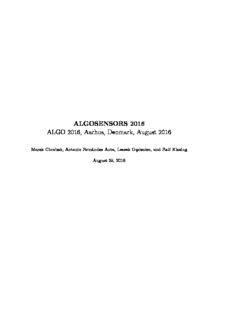
ALGOSENSORS 2016 ALGO 2016, Aarhus, Denmark, August 2016
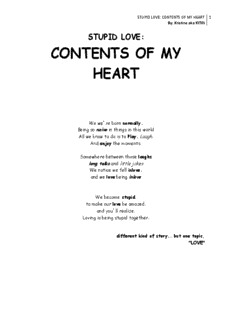
By: Kristine aka KITIN

By Mohamed Farouk Ahmed Mohamed

Games, Ideas and Activities for Primary Drama (Classroom Gems)
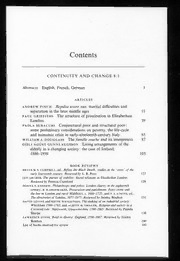
Continuity and Change 1993: Vol 8 Table of Contents

Geoderma 2006: Vol 136 Table of Contents
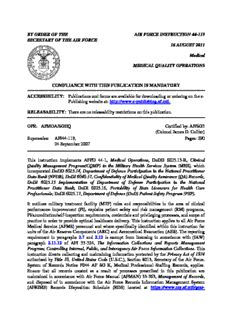
BY ORDER OF THE SECRETARY OF THE AIR FORCE AIR FORCE INSTRUCTION 44-119 16 ...

DTIC ADA515001: Context-Driven Decision Making in Network-Centric Operations: Agent-Based Intelligent Support

Greek Government Gazette: Part 4, 2006 no. 480

Bursa İlinde Süt İşleyen Tarımsal Kooperatiflerin Ekonomik Analizi 16.2.2016 08:21:22

by URTHER RWAFA submitted in accordance with the requirements

Avertissements Agricoles - Grandes cultures - Ile de France - 2006 - 37

JRNMS VOL 92

DTIC ADA484724: Utilizing the Common Criteria for Advanced Student Research Projects

